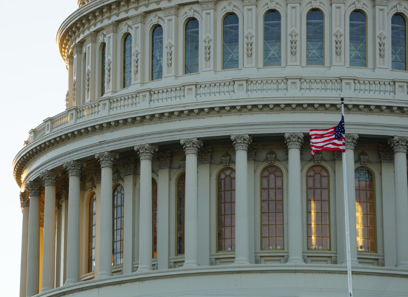Future-Proof Your Service: Key Cybersecurity Predictions You Required to Know
As companies confront the accelerating rate of digital transformation, comprehending the developing landscape of cybersecurity is important for long-term resilience. Predictions recommend a significant uptick in AI-driven cyber threats, together with increased governing analysis and the imperative shift towards No Depend on Design.
Increase of AI-Driven Cyber Risks

One of the most worrying advancements is using AI in producing deepfakes and phishing systems that are incredibly persuading. Cybercriminals can produce audio and video clip content, posing execs or trusted people, to adjust sufferers into disclosing sensitive info or authorizing illegal transactions. Additionally, AI-driven malware can adapt in real-time to evade discovery by standard safety and security steps.
Organizations should acknowledge the immediate requirement to strengthen their cybersecurity frameworks to deal with these evolving risks. This consists of investing in sophisticated hazard detection systems, fostering a society of cybersecurity recognition, and carrying out durable incident action strategies. As the landscape of cyber dangers changes, positive steps end up being vital for protecting sensitive information and keeping organization honesty in an increasingly digital globe.
Raised Emphasis on Information Privacy
How can organizations efficiently browse the expanding emphasis on information privacy in today's electronic landscape? As regulative frameworks progress and customer expectations increase, organizations should focus on durable data personal privacy methods. This involves embracing comprehensive information administration policies that make certain the honest handling of personal information. Organizations ought to carry out routine audits to examine conformity with policies such as GDPR and CCPA, identifying potential susceptabilities that can result in data breaches.
Purchasing employee training is important, as team recognition directly affects information protection. Organizations needs to cultivate a society of privacy, encouraging workers to recognize the value of securing sensitive information. In addition, leveraging technology to enhance information safety is essential. Applying innovative encryption approaches and protected data storage space solutions can substantially minimize risks connected with unapproved access.
Cooperation with legal and IT teams is essential to align data privacy initiatives with company purposes. Organizations must additionally involve with stakeholders, consisting of clients, to interact their commitment to information privacy transparently. By proactively attending to data privacy worries, organizations can build count on and boost their track record, ultimately adding to long-term success in a significantly inspected digital environment.
The Change to No Trust Fund Style
In response to the evolving danger landscape, companies are increasingly embracing No Count on Design (ZTA) as a basic cybersecurity method. This strategy is based on the principle of "never depend on, constantly confirm," which mandates continuous verification of customer identities, gadgets, and this hyperlink information, no matter their location within or outside the network boundary.
Transitioning to ZTA includes executing identification and gain access to administration (IAM) remedies, micro-segmentation, and least-privilege accessibility controls. By granularly managing accessibility to sources, companies can reduce the risk of insider dangers and decrease the effect of exterior violations. ZTA includes robust surveillance and analytics capacities, permitting organizations to find and react to anomalies in real-time.

The shift to ZTA is also fueled by the increasing adoption of cloud solutions and remote work, which have increased the attack surface area (cybersecurity and privacy advisory). Standard perimeter-based safety designs want in this brand-new landscape, making ZTA an extra durable and flexible structure
As cyber risks remain to expand in refinement, the adoption of Absolutely no Depend on concepts will be important for companies seeking to shield their properties and preserve Check This Out governing compliance while ensuring business continuity in an unsure setting.
Regulatory Modifications on the Horizon

Future guidelines are expected to attend to a variety of issues, consisting of data personal privacy, violation notice, and case reaction methods. The General Information Security Guideline (GDPR) in Europe has established a criterion, and comparable frameworks are emerging in various other regions, such as the USA with the proposed federal personal privacy regulations. These guidelines frequently enforce rigorous penalties for non-compliance, stressing the requirement for companies to prioritize their cybersecurity steps.
Furthermore, industries such as financing, healthcare, and important infrastructure are visit their website likely to deal with extra rigid needs, showing the sensitive nature of the data they manage. Compliance will certainly not just be a legal responsibility yet an important element of building depend on with customers and stakeholders. Organizations must stay in advance of these changes, integrating regulatory requirements into their cybersecurity techniques to ensure resilience and shield their properties properly.
Value of Cybersecurity Training
Why is cybersecurity training a crucial part of an organization's defense strategy? In an age where cyber hazards are significantly advanced, organizations have to recognize that their staff members are often the first line of defense. Reliable cybersecurity training equips personnel with the expertise to recognize potential dangers, such as phishing assaults, malware, and social engineering tactics.
By cultivating a culture of safety and security recognition, organizations can dramatically lower the danger of human mistake, which is a leading root cause of data violations. Normal training sessions guarantee that employees stay informed regarding the most recent dangers and best techniques, therefore boosting their capacity to respond suitably to events.
Moreover, cybersecurity training promotes compliance with regulative demands, decreasing the risk of legal consequences and punitive damages. It also equips workers to take ownership of their duty in the company's safety structure, bring about an aggressive rather than reactive approach to cybersecurity.
Verdict
In conclusion, the evolving landscape of cybersecurity demands proactive procedures to attend to emerging hazards. The rise of AI-driven assaults, combined with enhanced data privacy concerns and the transition to Absolutely no Trust fund Style, necessitates a comprehensive approach to safety and security.